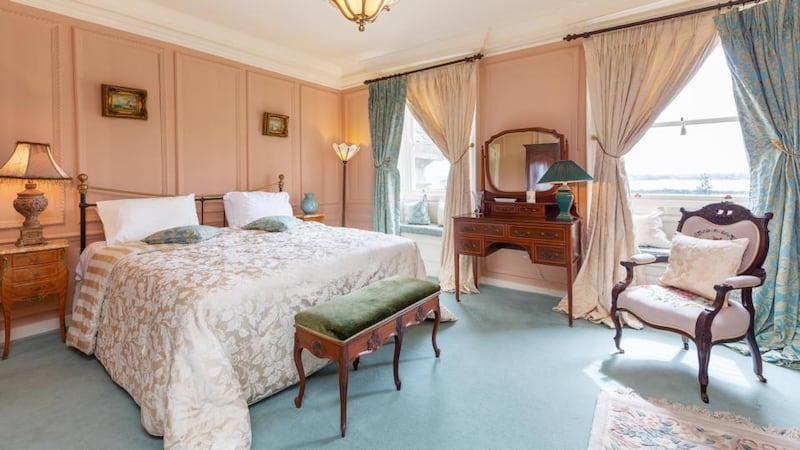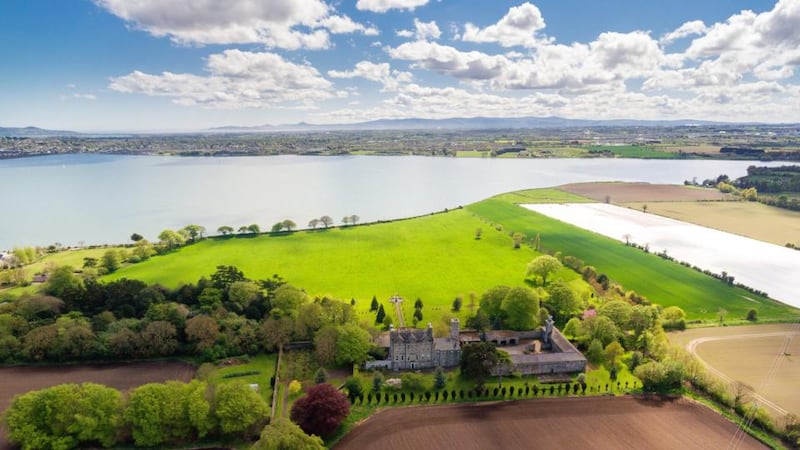Seafield House in Donabate may be located a half hour from the city centre but once through the gates it's like entering another realm. At the end of the long tree-lined avenue the main house reveals itself, and what a reveal. A rare Palladian mansion standing proudly in an 80-acre parkland setting with views across the estuary to Malahide, it is one of Dublin's finer homes and best kept secrets.
One of Seafield's great claims is that it is believed to have been built nearly 300 years ago by the classical architect Sir Edward Lovett Pearce. A champion of the Palladian style, his finest buildings in Ireland include Castletown House and the Irish Houses of Parliament (today the Bank of Ireland) on College Green. Lovett Pearce died in 1733 and the original Seafield House dating from 1730 certainly bears many of the hallmarks of his elegant symmetrical designs.
About a 100 years later a west wing was added to include an Italianate tower (more of a cosmetic than practical enhancement)and a coach and stable yard complete with clock tower.
0 of 12
The original owner of the property was Bendict Arthure, the high sheriff of Dublin. It was then for many years in the hands of the Hely-Hutchinson family, prominent figures in Irish political history. Its latter day owners were the renowned property and art collectors Sir Robert and Lady Sheelagh Goff who lived at Seafield House for many years before moving to the Ballincor estate on 4,000 acres in the Wicklow Mountains.
In 1996 they sold the house to the current owners for just under IR£1 million. Liam and Kaye Cronin, originally from Cork, had lived in London for many years where Liam had built a substantial clothes import business, but in the late 1990s they decided to plan a return to Ireland and Seafield House was identified






Investment
Liam says Kaye couldn’t understand why more people weren’t interested in buying Seafield at the time; he adds that it may have had something to do with the substantial additional investment required in the property.
Its refurbishment, retaining original features, took more than a year, and an estimated IR£3million to complete. It involved a complete rewiring, replumbing, reroofing and upgrade of windows and bathrooms, and even the addition of a new flight of granite steps sweeping up to the front door.
Some 21 years on, and the Cronins are ready now for retirement proper. and are moving on to (nearby) pastures new. They are selling Seafield House with 895sq m/9,634sq ft on 80 acres with gardens, coach and stable yard through Sherry FitzGerald Country Homes for €9.95million.
During their tenure the Cronins took great care to preserve the history of the house which centres around a dramatic double-height entrance hall, which, typical of the design style of the time, runs the depth of the building and is unimpeded by the staircase tucked away off the hall.
The result is a bright, naturally-lit space dominated by a series of meticulously restored full-length wall paintings of various figures from Greek mythology. From the school of Dutch artist William van der Hagen, these unique monochrome Grisele drawings are some of the earliest examples of their kind in Ireland.
Overlooking the grand hall is an open gallery linking the principle bedrooms on the upper floor.
Kaye spent three years decorating the house to a rich and sumptuous palette of colours and textures. A striking bespoke carpet runs throughout the property from the main hall and gives a luxurious flow to the house. The graphic emblem at its heart mirrors the fanlight design over the front door.




Plasterwork
Elsewhere, and in particular in the three fine reception rooms off the main hall, great care has been taken to retain the qualities of the original design, in particular in the panelling and plasterwork. An Adam fireplace sits in the dining room, and across the way in the drawing room is a fine marble fireplace rescued from a castle at Lough Lomond in Scotland.
The beauty of these classic Georgian dwellings is their restraint, which means the reception rooms are very liveable thanks to modest proportions symmetrically built around fireplaces and the tall recessed windows with woodland and estuary views.
Beyond the formal accommodation, the house relaxes into a more homely ambience, leading downwards to a bright country kitchen in the Victorian wing and alongside it a cosy club-style sitting room where the family spend much of their time.
The lower ground floor is encouragingly dry - not always the case - and new owners have a blank slate here to reconfigured it as additional accommodation, games rooms or a gym.
Upstairs, and arranged over two floors there are eight bedrooms, the four on the first floor are laid out in suites - a little dated now, these are likely to get a cosmetic refresh, though the bone structure is there. Up again is a series of double rooms arranged around a central space ideal for visiting children and grandchildren - a place where they can escape to and play.


Woodland
Outside, nearly 600 trees have been planted in 15 acres of woodland. “I made sure they were at least 20 years old, because I wanted to enjoy them in my lifetime,” says Liam.
There is a lovely south-facing walled garden and a kitchen garden ensuring fresh daily produce. A yew walk echoes the famous one at Lismore Castle in Co Waterford, and stone steps lead to more walks throughout the grounds.
The statuary everywhere is impressive, the highlight of which is an Italian fountain sourced by Kaye that cleverly anchors and connects Seafield’s striking façade with those sea views.
Selling agent Roseanne de Vere Hunt believes the property’s major attraction apart from the compelling historic house is its accessibility to Dublin airport (within 10 minutes) and the city centre. There are few properties that offer the same substantial private acreage within such easy reach of the city.
De Vere Hunt says there is a growing US market for European properties providing an escape from the US, and also interest among Asian buyers educating their children in Europe.




















